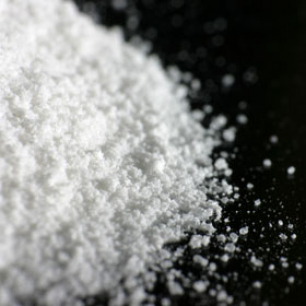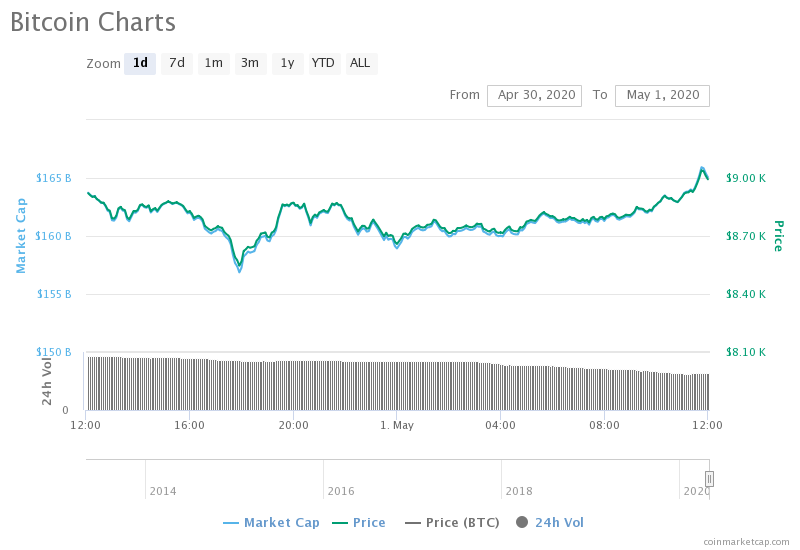Contents:


Unlike a bank overdraft, there is no cash flow impact from a book overdraft. Book overdrafts related to a specific bank account should not be offset against other cash or cash equivalent accounts . Cash & cash equivalents are essential components of a balance sheet and resemble a company’s financial health. It helps pay off short-term obligations very quickly without any need for borrowing. It is also essential for the shareholders as it can pay them dividends. The company might be thinking of business acquisitions in the future as cash reserves are significantly higher according to industry standards.
- Otherwise, bank overdrafts are to be reported separately as a current liability.
- Preferred equity shares can also be considered an example of a cash equivalent.
- Also, refer back to Chapter 4 for the discussion of the statement of financial position and how assets are classified.
- This element excludes distributions that constitute a return of investment, which are classified as investing activities.
- Bankers’ acceptances are frequently used to facilitate transactions where there is little risk for either party.
Cash equivalents are short-term, highly liquid investments with a maturity date that was 3 months or less at the time of purchase. In other words, there is very little risk of collecting the full amount being reported. Cash Equivalents are short-term highly liquid company assets that can be easily converted to cash and are not subject to any significant changes in value. Even though the financial statements say, “Cash,” that number is really a summary of all the demand deposit accounts, such as business checking, payroll, and maybe some tiny petty cash accounts. If arrangements requiring maintenance of compensating balances during the year were materially greater than those at year end, that fact should be disclosed. Disclosure may also include a statement, if appropriate, that the amounts are legally subject to withdrawal with or without sanctions, as applicable.
Intermediate Financial Accounting 1
Marketable securities are fairly liquid, but not as liquid as cash equivalents because selling stocks and other marketable securities in a hurry may adversely affect the price . If you examine the above asset section of Facebook’s balance sheet, you may notice the assets are not listed alphabetically, or by descending amount, but by descending assessment of liquidity. Examples include Cash and Paper Money, US Treasury bills, undeposited receipts, Money Market funds, etc.
The statement of cash flows show the company’s ability to change cash flows in future circumstances. Cash and cash equivalents are the most liquid type of company assets used by businesses to settle debts and purchase goods. Any change to a reporting entity’s policy for determining restricted cash must be evaluated as a change in accounting principle subject to a conclusion that the new principle is preferable. Cash stored in the bank account is the best example for this discussion because it is one of the company’s most liquid assets and can help it repay its short-term obligations. According to the 2021 financial statement by Apple Inc, its total cash and cash equivalents are $34,940 million.
This instrument is a specified amount to be paid to the holder on a specific date. Ariel Courage is an experienced editor, researcher, and former fact-checker. She has performed editing and fact-checking work for several leading finance publications, including The Motley Fool and Passport to Wall Street. To explore careers in corporate finance, check out our interactive Career Map.
NURIX THERAPEUTICS, INC. Management’s Discussion and Analysis of Financial Condition and Results of Operations (form 10-Q) – Marketscreener.com
NURIX THERAPEUTICS, INC. Management’s Discussion and Analysis of Financial Condition and Results of Operations (form 10-Q).
Posted: Thu, 13 Apr 2023 20:06:21 GMT [source]
This subject is covered in management accounting and financial management courses. Negotiable instruments such as money orders, certified cheques, cashiers’ cheques, personal cheques, bank drafts, and money market funds with chequing privileges. Furthermore, the cash and cash equivalent line item is always treated as a current asset and is the first item listed on the assets side of the balance sheet. The amount of cash and cash equivalents on hand speaks to a company’s financial health as it reflects the ability to pay short-term obligations.
However, in terms of other marketable securities, judgment needs to be applied. ASC 230 does not define restricted cash; instead, it refers to “amounts generally described as” restricted cash or restricted cash equivalents. By referring to restricted cash more broadly, the FASB intended it to encompass all restricted cash accounts, regardless of their classification on the balance sheet. In determining whether compensating balance arrangements are sufficiently material to require segregation or disclosure, various factors should be considered.
Repayment of the $40 million existing debt is a $40 million financing outflow. When the $60 million is used for construction expenditures, it will be reflected as an investing outflow if it is for the payment of infrastructure, such as PP&E. When the $100 million bond is ultimately repaid, it will be reflected as a financing outflow. Generally, the fact that a reporting entity maintains a separate bank account for funds it owes to a third party does not require the cash to be restricted on the balance sheet.
Treasury Bills
Documents, financial instruments other than cash, or anything else of representative value to which the gaming operation has assigned a monetary value. A cash equivalent includes, but is not limited to, tokens, chips, coupons, vouchers, payout slips and tickets, and other items to which a gaming operation has assigned an exchange value. Cash inflow is the movement of cash into a business, sourced from activities such as payments received from customers; this cash is used to make payments or reinvest into the business which is known as cash outflow. A positive cash flow is desired because it indicates that there is cash available for the business to conduct its operations, investments, and other financial activities. A business’s cash equivalents are shown at the top of the balance sheet and cash as these assets are the most liquid. Other cash or noncash adjustments to reconcile net income to cash provided by operating activities that are not separately disclosed in the statement of cash flows .

Petty cash funds must be safeguarded and recorded in order to avoid thefts. Often there is a custodian appointed who is responsible for the documentation of petty cash transactions. In 2021, Microsoft invested in, held, and conducted transactions with cash equivalents throughout the year. Fees or fines may apply for early redemptions of certain cash equivalents, such as CDs. Cash equivalents are part of the company’s net working capital , which it uses to pay invoices for operating expenses, buy inventory, cover debt-servicing, and make other purchases. Investopedia requires writers to use primary sources to support their work.
Definition of Cash Equivalents
Because cryptocurrencies are not legal tender and not backed by governments or legal entities, U.S. GAAP does not treat cryptocurrency as cash, foreign currency, or cash equivalents. It may be inefficient to sit on these resources instead of deploying them for company growth or rewarding investors with dividends.
- Additionally, they help improve a company’s creditworthiness as creditors view them as a sign of financial stability.
- Typically, the combined amount of cash and cash equivalents will be reported on the balance sheet as the first item in the section with the heading current assets.
- According to their experience, BAs with longer maturity periods were usually redeemed within a month if they were sold at such a discount, ie they are highly liquid.
- Examples are treasury bills (T-bills), money market funds, short-term notes receivable, and guaranteed investment certificates .
If a company wants to earn some return on its money as it plans its long-term strategy, it can choose to invest some of its capital in cash equivalents. These very short-term, low risk, highly liquid investments may not make a tremendous amount of money. However, they earn more than cash in a bank account and can be converted into cash quickly and easily. Cash encompasses cash on hand and any deposits made in financial institutions, whereas cash equivalents are short term investments that are liquid and easy to sell, generally with a maturity period of three months or less. This complexity is compounded by the fact that every transaction recorded through the financial statements needs to be assessed for its impact on the statement of cash flows. Yet, there has not been significant standard setting in this area since 2016 when the EITF clarified a series of classification issues and changed the presentation of restricted cash and cash equivalents.
Importance in Financial Modeling and Valuation
Learn debits and credits fundamentals and how to read financial statements with CFI’s free online accounting classes. Working capital is important for funding a business in the short term and can be used to help finance inventory, operating expenses, and capital purchases. Cash and Cash Equivalentsmeans cash and cash equivalents in accordance with the Accounting Principles. Another example is when the price of equity shares fluctuates a lot and these shares are highly liquid, ie equity shares can be redeemed into cash whenever an investor wants to. However, the investor bears the significant risk of changes in share price.

Therefore very liquid securities are sometimes called cash equivalents. Cash equivalents strike a balance between investing, risk, and liquidity. In addition, cash equivalents allow companies to earn some amount of interest as they plan how to use their money in the long-term. These current assets are as reliable as cash and can be accessed quickly. As opposed to other types of financial or investment vehicles with long maturities or holding requirements, cash equivalents are not meant to be invested for long. A certificate of deposit is a type of savings account with a financial institution.
For non-monetary asset exchanges without commercial substance, the expectation is that the exchange will not materially alter future cash flows. An asset exchange with commercial substance will cause future cash flows to materially change. Quick assets include the current assets that can presumably be quickly converted to cash at close to their book values. What all those cash and cash equivalent line items have in common in the above example from Facebook is that they are readily convertible to actual funds in the checking account that can be used to pay bills.
Hermès International : Release on 1st quarter 2023 sales – Marketscreener.com
Hermès International : Release on 1st quarter 2023 sales.
Posted: Fri, 14 Apr 2023 06:01:02 GMT [source]
The shareholders make gain from such holdings in the form of returns or increase in stock value. Cash in checking accounts allow to write checks and use electronic debit to access funds in the account. Liquidity refers to the ease with which an asset, or security, can be converted into ready cash without affecting its market price. Anderson is CPA, doctor of accounting, and an accounting and finance professor who has been working in the accounting and finance industries for more than 20 years. Her expertise covers a wide range of accounting, corporate finance, taxes, lending, and personal finance areas. This may be considered a cash equivalent if they are purchased shortly before the redemption date and not expected to experience material fluctuation in value.

However, oftentimes cash equivalents do not include equity or stock holdings because they can fluctuate in value. Some borrowing arrangements do not prohibit the withdrawal of compensating balances, but as a practical matter; future credit availability may be dependent on the maintenance of such balances. Items commonly considered cash equivalents include treasury bills, commercial paper, and money market funds. Although what constitutes a money market fund is not defined in ASC 230, we believe it is appropriate for a fund to be classified as a cash equivalent if it meets all of the qualifying criteria for a money market fund under the 1940 Act. ASC 230 does not specify how to classify changes in restricted cash in the statement of cash flows. Reporting entities are required to explain the change in the cash, cash equivalents, and restricted cash balances during the period in the statement of cash flows.
ARCPOINT TO HOST CONFERENCE CALL TO PROVIDE … – GlobeNewswire
ARCPOINT TO HOST CONFERENCE CALL TO PROVIDE ….
Posted: Thu, 13 Apr 2023 21:12:34 GMT [source]
https://1investing.in/ of cash equivalents would be cash in money market investments. Typically, the combined amount of cash and cash equivalents will be reported on the balance sheet as the first item in the section with the heading current assets. Under IFRS, cash includes physical cash on hand, demand deposits, and short-term investments readily convertible to known amounts of money and subject to an insignificant risk of change in value.
